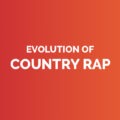¡Bienvenido de nuevo! Or should I say… welcome back! RAC’s How to Go Viral series returns with our latest edition: Multilingual Multi*Verse* (see what I did there? ). This month, we’re doing a deep dive into the world of multilingual artists and how they use their multiple language skills to take their songwriting and content to the next level. We have a lot to unpack, so let’s get right to it! As always, feel free to check out some previous articles in this series like Juno-Nominated Women or Finding Your Niche for more tips and tricks on creating viral content.
Using language to your advantage
This month, RAC’s very own Maryze has joined us to chat about her viral French bop, “Langue”, and how tapping into her French background has allowed her to grow as a songwriter and content creator. Maryze is a Montreal-based artist who’s no stranger to going viral on TikTok and IG Reels, whether it be for her heavily-accented iconic icicle video – which is sitting at 4.6 million views on TikTok – or her viral French IG reel promoting “Langue” – which has amassed a whopping 8 million views, or for, well, just generally being a shaggy-haired, hot, bilingual, queer artist “spreading the French gay agenda”!
Photo credit: Priscilla Mars
RAC: Hi Maryze! Thank you for joining us today! Do you remember your very first viral video? Can you describe the video and why you think this particular video took off?
Maryze: Thanks for having me! My first truly viral video was the Montreal icicle rating series. I was bored in the thick of the pandemic and went around the city filming scary icicles, then added a narration with a heavy French accent rating how dangerous they were out of ten. I honestly don’t know if it would have gone viral any other time, but since folks were stuck at home, I think it brought a little lightness and silliness. It had nothing to do with my music but it really expanded my audience!
RAC: When did you first start writing music in French and when did you start releasing it?
Maryze: I’ve written in both French and English for as long as I can remember. I grew up in a bilingual household so I think my brain functions in equal parts in both languages. I’ve released French music in every musical project I’ve been a part of, from bands in high school, to my solo act now! Songwriting in just one language feels limiting – it takes the two to represent all my emotions and identity.
RAC: How has being multilingual impacted the way you create music and content?
Maryze: One fun way is being able to rhyme French with English. Sometimes if I’m stumped for a line in a song, I’ll try it in the other language. Some words surprisingly sound similar. Then in my content, I feel like more folks – especially francophone Canadians from outside Quebec – can relate to some “bilingual struggles” I like to joke about.
RAC: How has your multilingual content been received and how has it impacted your socials? Do you feel that since you have started creating and releasing content and music in French you’ve reached more people?
Maryze: It’s allowed me to reach more people for sure. I’m really grateful to be able to share my experience as a half French – half Canadian artist and to have it be largely well received. There are definitely mean comments about my accent or cultural identity, but I like to remind haters that they’re just driving up my engagement.
RAC: How did you come up with the concept for your song “Langue” and the viral content surrounding it?
Maryze: I love cheeky wordplay. The fact that “Langue” in French means both “language” and “tongue” left lots of room for double entendre. My collaborators on the track Morganne and Solomon K-I loved the concept and we wrote and recorded the entire song in one session. The promo content has also just been playful and tongue-in-cheek, trying out a bunch of funny ideas and seeing what works. The reel that went most viral is an “excuse me, what are you listening to?” style video that I filmed on a train in Australia while on tour. Sometimes the simplest content randomly does well, so I would recommend to post your drafts.
RAC: Any tips and tricks for multilingual artists who might want to incorporate another language into their content or music?
Maryze: If you’re inspired, absolutely do it! You might tap into an entirely new branch of your creativity, so don’t limit your art.
RAC: With all the success of Langue, can we expect more French music from you in the future? If so, how do you plan to continue to incorporate your multilingualism into your social media content?
Maryze: Definitely. I was surprised by how much American audiences seem to be craving music en français. I performed my first headline show in Los Angeles recently and people were actually singing along to the French lyrics! I’ve never really specifically planned to incorporate multilingualism into my content – it just happened naturally. I think the more true to yourself you are on social media, the more people will connect with what you do.
Photo credit namestage5
Trends to Try
Perform your song!
It may seem obvious, but one of the best ways to gain traction on your song is to post a video of yourself lip synching or dancing (or both!) to it. It’s important to remember that not everyone speaks another language. A language that may seem second nature to you might be totally foreign or riveting for the next person. It creates an opportunity for others to experience different cultures and the beauty of other languages in a musical format. Toronto-based artist Aiza does a great job of seamlessly incorporating French into her primarily Anglophone catalogue with songs like “Kité”. She creates super engaging videos and viral content where she dances and performs the song, like in this video, which has 261k views.
A more mainstream commercial success example would be Ive, a K-pop group from South Korea have made a name for themselves blending Korean and English lyrics in their hit songs like “Baddie”. Their social content of them performing the songs gets the group millions of views.
Take a song that you’ve already written and translate it into another language. Heck, even if you don’t speak the language perfectly, or you have an accent while singing, translating your song can help you reach a whole new audience. A great example is Madelline with her song “Dopamine.” The English version of the song was already performing well on socials, however, when she translated it into French, and posted this video of her performing it in the metro, it catapulted the song to new heights. The viral video has been seen over 4 million times, and the French version of the song has been streamed over 3 million times, making the total stream count for both versions combined over 8 million. Having multilingual versions is also great for radio play. You can pitch each version of the song to stations of their respective languages or countries – and make more royalty income.
Write a verse in a different language!
There are so many ways to bring your culture and international appeal to a song. On Cardi B’s hit song “I Like It”, J Balvin does a whole verse primarily in Spanish, classifying the song as “Latin Trap”. It went on to become top 10 in Canada, the US, Ireland, New Zealand, Portugal, Slovakia, Spain, Switzerland, and the UK. It was dubbed the best song of the year by Apple Music’s editorial staff, and was nominated for Record of the Year at the Grammys.
As a smaller artist, some fun ways to accomplish something similar could be doing a “write a verse” challenge on a song that’s already trending in a different language, translating an already popular song and creating content around that, filming yourself singing in multiple languages, or adding the translated lyrics on top of a video for English speakers (or even performing in ASL!).
Alright, that’s all we got this month, folks! So, get on out there and throw your flavour onto an already trending song, or show the world your original multilingual music through creating content that resonates with you. If you want more tips that aren’t multilingual themed, be sure to check out our Back to the Basics or Collaboration articles. Happy content creating!
Written by Maya Malkin
Illustration by Holly Li






















